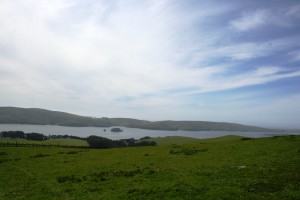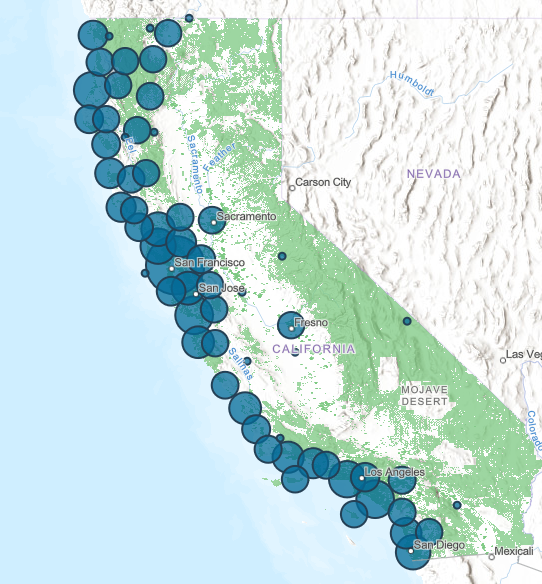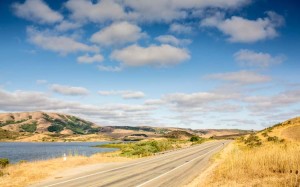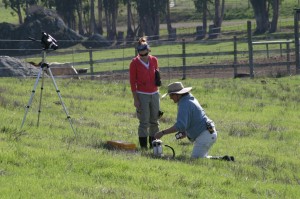The Conservancy at 40 Years: Marin County
 The next time you are traveling around west Marin, imagine the expansive rolling hills covered with thousands of homes and highways instead of family farms. That was the future for many of the ranches and farms of west Marin County if concerned citizens hadn’t banded together to protect Marin’s 150-year old farming heritage. Approximately 40 percent (120,000 acres) of Marin County is working ranch lands, including grazing for beef and dairy cattle, and small crop farms for produce, olives, and wine. Most of these ranches are owned and run by multi-generational family farmers.
The next time you are traveling around west Marin, imagine the expansive rolling hills covered with thousands of homes and highways instead of family farms. That was the future for many of the ranches and farms of west Marin County if concerned citizens hadn’t banded together to protect Marin’s 150-year old farming heritage. Approximately 40 percent (120,000 acres) of Marin County is working ranch lands, including grazing for beef and dairy cattle, and small crop farms for produce, olives, and wine. Most of these ranches are owned and run by multi-generational family farmers.
In the late 1960s, Marin County had approved zoning and planning changes that would allow for a city with a population of 125,000 on the shores of Tomales Bay and multi-lane highways transecting the country side, creating a bedroom community for city commuters. After years of opposition, the County rescinded its plan. But with the pressure remaining from outside interests to buy individual ranches for estate homes, and increasing economic pressures on ranch operations, many ranchers faced selling the family farm for top dollar. In response to the threat to a way of life, ranchers and environmentalists founded the Marin Agricultural Land Trust in 1980 to buy easements to provide economic boost for farms and protect them forever from development. MALT acquired its first easement in 1983 with funding from the Conservancy. Since then, MALT has acquired 76 easements and protected over 47,000 acres, and of that the Conservancy has granted nearly $12 million to MALT help acquire 22 easements and protect nearly 14,000 acres.
In addition to protecting ranches from development, the Conservancy has partnered with the Marin Resource Conservation District since 2000 to enhance aquatic, salmonid and riparian habitat on west Marin Ranches. The Conservancy has funded projects to reduce erosion, restore riparian tree corridors, enhance fish habitat, and enhance grazing land on several Tomales Bay-draining ranches. In the face of prolonged droughts and increasing temperatures, the RCD is undertaking an innovative approach to improving water retention on ranches and permanently sequestering carbon in soils. In 2013, the Conservancy funded a pilot study and planning effort by RCD to create ‘Carbon Farming’ plans for Marin ranches. The plans outline ranch practices that will improve ranch productivity and sequester carbon in grasslands.
For more information about MALT: http://www.malt.org/home
For more information about Marin RCD and Carbon Farming: http://www.marinrcd.org/carbon-farms/
Photos by MALT, Lech Naumovic, and the Marin RCD
Latest News
- Job Posting: Deputy Executive Officer C. E. A.“Love the California Coast, the environment, supervising people, and public agency management? This might be the job for you!” The State Coastal Conservancy is seeking an experienced leader to join our Executive Management team as the Deputy Executive Officer, CEA, range A. Reporting to and assisting the Executive Officer, the Deputy Executive Officer develops and […] (Read more on Job Posting: Deputy...)
- Press Release: State, Regional Agencies Join Forces to Prepare Bay Area for Sea Level Rise, Increased FloodingMemorandum Marks Commitment to Coordinated Efforts SAN FRANCISCO, July 22, 2024… Seven regional and state public agencies have executed a new memorandum of understanding committing each agency to a joint work program to address increased threats of flooding and sea level rise in the nine-county San Francisco Bay Area region. The agencies participating in the […] (Read more on Press Release: State,...)
- San Francisco Bay Area Water Trail Implementation Meeting #42 – June 21, 2024, 10am – 12pmAGENDA June 21 , 2024 10:00 a.m. – 12:00 p.m. VIRTUAL MEETING Zoom Meeting Information: Please join us on Zoom at this link: https://scc-ca-gov.zoom.us/meeting/register/tZEtcumrqTMrHdeYKO2888Cqs7e8id82p4VD Desired Outcomes of Meeting: Attendees are informed of Water Trail-related activities, progress, and accomplishments Attendees are informed about a new water access audio tour from guest speaker Attendees are informed of […] (Read more on San Francisco Bay...)

 Help Save Sea Otters at Tax Time
Help Save Sea Otters at Tax Time



